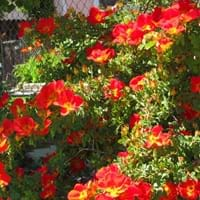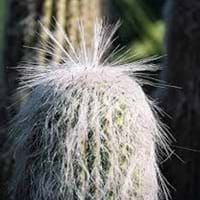Life Span
Perennial
Perennial
Type
Flowering Plants, Ornamental Plants, Shrubs
Cactus or Succulent
Origin
Not Available
Mexico
Types
Not Available
Not Available
Habitat
Foot Hills
Dry areas, Forest margins, gardens, Semi arid regions, Semi desert
USDA Hardiness Zone
Not Available
11-15
AHS Heat Zone
Not Available
12-10
Sunset Zone
Not Available
H1, H2, 21, 22, 23, 24
Habit
Clump-Forming
Narrow Upright/Fastigiate
Flower Color
Orange Red, Yellow
Pink
Flower Color Modifier
Bicolor
Not Available
Fruit Color
Non Fruiting Plant
Light Pink
Leaf Color in Spring
Green
White
Leaf Color in Summer
Green, Dark Green
White
Leaf Color in Fall
Dark Green
White
Leaf Color in Winter
Dark Green
White
Leaf Shape
Pinnate
Funnel shaped
Plant Season
Spring, Summer, Fall
Spring, Summer, Fall, Winter
Sunlight
Full Sun, Partial Sun
Full Sun
Growth Rate
Medium
Very Slow
Type of Soil
Loam, Sand
Loam, Sand
The pH of Soil
Acidic, Neutral
Acidic, Neutral, Alkaline
Soil Drainage
Well drained
Well drained
Bloom Time
Spring, Late Spring, Early Summer, Summer, Late Summer, Early Fall, Fall
Late Spring, Early Summer, Summer
Repeat Bloomer
Not Available
No
Tolerances
Drought
Drought
Where to Plant?
Container, Ground, Pot
Container, Ground, Pot
How to Plant?
Cuttings
Seedlings, Stem Planting, Vegetative Reproduction
Plant Maintenance
Medium
Medium
Watering Requirements
Average Water Needs
Average Water Needs, Do Not over Water, Water when soil is dry
In Summer
Lots of watering
Lots of watering
In Spring
Moderate
Moderate
In Winter
Average Water
Average Water
Soil pH
Acidic, Neutral
Acidic, Neutral, Alkaline
Soil Type
Loam, Sand
Loam, Sand
Soil Drainage Capacity
Well drained
Well drained
Sun Exposure
Full Sun, Partial Sun
Full Sun
Pruning
Remove damaged leaves, Remove dead branches, Remove dead leaves
Remove damaged leaves, Remove dead branches, Remove dead leaves
Fertilizers
All-Purpose Liquid Fertilizer
All-Purpose Liquid Fertilizer
Pests and Diseases
Beetles, Black Spot, Caterpillars, Downy mildew, Mosaic viruses, Powdery mildew, Rust, Scale insects, Thripes
Red blotch
Plant Tolerance
Drought
Drought
Flower Petal Number
Double
Not Available
Edible Fruit
Not Available
No
Foliage Texture
Medium
Bold
Foliage Sheen
Glossy
Matte
Invasive
Not Available
No
Self-Sowing
Not Available
No
Attracts
Birds, Butterflies
Not Available
Allergy
Rash
Skin irritation
Aesthetic Uses
Showy Purposes
Showy Purposes
Beauty Benefits
Not Available
Not Available
Environmental Uses
Air purification
Air purification
Medicinal Uses
Not Available
Not Available
Part of Plant Used
Flowers
Bulbs, Hair
Other Uses
Oil is used in perfume, soaps, creams, etc.
Hair is used in making sweaters, Showy Purposes
Used As Indoor Plant
Yes
Yes
Used As Outdoor Plant
Yes
Yes
Garden Design
Container, Cutflower, Feature Plant, Foundation, Mixed Border, Topiary / Bonsai / Espalier
Container, Feature Plant, Houseplant, Rock Garden, Wall
Botanical Name
Rosa foetida
CEPHALOCEREUS senilis
Common Name
Austrian briar, Persian yellow rose, Austrian copper rose
Bunny Cactus
White Persian Cat cactus
In Hindi
Austrian copper rose
ओल्ड मैन कैक्टस
In German
Die Gelbe Rose, Fuchs-Rose, Wachs-Rose, Persische Gold-Rose, Austrian Briar
Old Man Cactus
In French
Le rosier fétide
Old Man Cactus
In Spanish
Rosa foetida
Viejo Cactus
In Greek
Austrian copper rose
Γέρος Cactus
In Portuguese
Rosa fétida
Old Man Cactus
In Polish
Róża żółta
Stary Cactus
In Latin
Austrian copper rose
Senem Cactus
Phylum
Magnoliophyta
Tracheophyta
Class
Magnoliopsida
Magnoliopsida
Order
Rosales
Caryophyllales
Family
Rosaceae
Cactaceae
Clade
Not Available
Angiosperms, Core eudicots, Eudicots
Tribe
Not Available
Pachycereeae
Subfamily
Not Available
Cactoideae
Number of Species
Not Available
Not Available
Difference Between Austrian Copper Rose and Old Man Cactus
If you are confused whether Austrian Copper Rose or Old Man Cactus are same, here are some features about those plants to help you choose better. Many people think that these two plants have the same characteristics, but one can see Austrian Copper Rose and Old Man Cactus Information and learn more about it. Fertilizers required for proper growth of Austrian Copper Rose are All-Purpose Liquid Fertilizer, whereas for Old Man Cactus fertilizers required are All-Purpose Liquid Fertilizer. Hence, one should know the basic difference between Austrian Copper Rose and Old Man Cactus if you are planning to have them in your garden to enhance its beauty.
<
Flowering PlantsImportance of Austrian Copper Rose and Old Man Cactus
Want to have the most appropriate plant for your garden? You might want to know the importance of Austrian Copper Rose and Old Man Cactus. Basically, these two plants vary in many aspects. Compare Austrian Copper Rose and Old Man Cactus as they differ in many characteristics such as their life, care, benefits, facts, etc. Every gardener must at least have the slightest clue about the plants he wants to plant in his garden. Compare their benefits, which differ in many ways like facts and uses. The medicinal use of Austrian Copper Rose is Not Available whereas of Old Man Cactus is Not Available. Austrian Copper Rose has beauty benefits as follows: Not Available while Old Man Cactus has beauty benefits as follows: Not Available.
Compare Facts of Austrian Copper Rose vs Old Man Cactus
How to choose the best garden plant for your garden depending upon its facts? Here garden plant comparison will help you to solve this query. Compare the facts of Austrian Copper Rose vs Old Man Cactus and know which one to choose. As garden plants have benefits and other uses, allergy is also a major drawback of plants for some people. Allergic reactions of Austrian Copper Rose are Rash whereas of Old Man Cactus have Skin irritation respectively. Having a fruit bearing plant in your garden can be a plus point of your garden. Austrian Copper Rose has no showy fruits and Old Man Cactus has no showy fruits. Also Austrian Copper Rose is not flowering and Old Man Cactus is not flowering . You can compare Austrian Copper Rose and Old Man Cactus facts and facts of other plants too.





